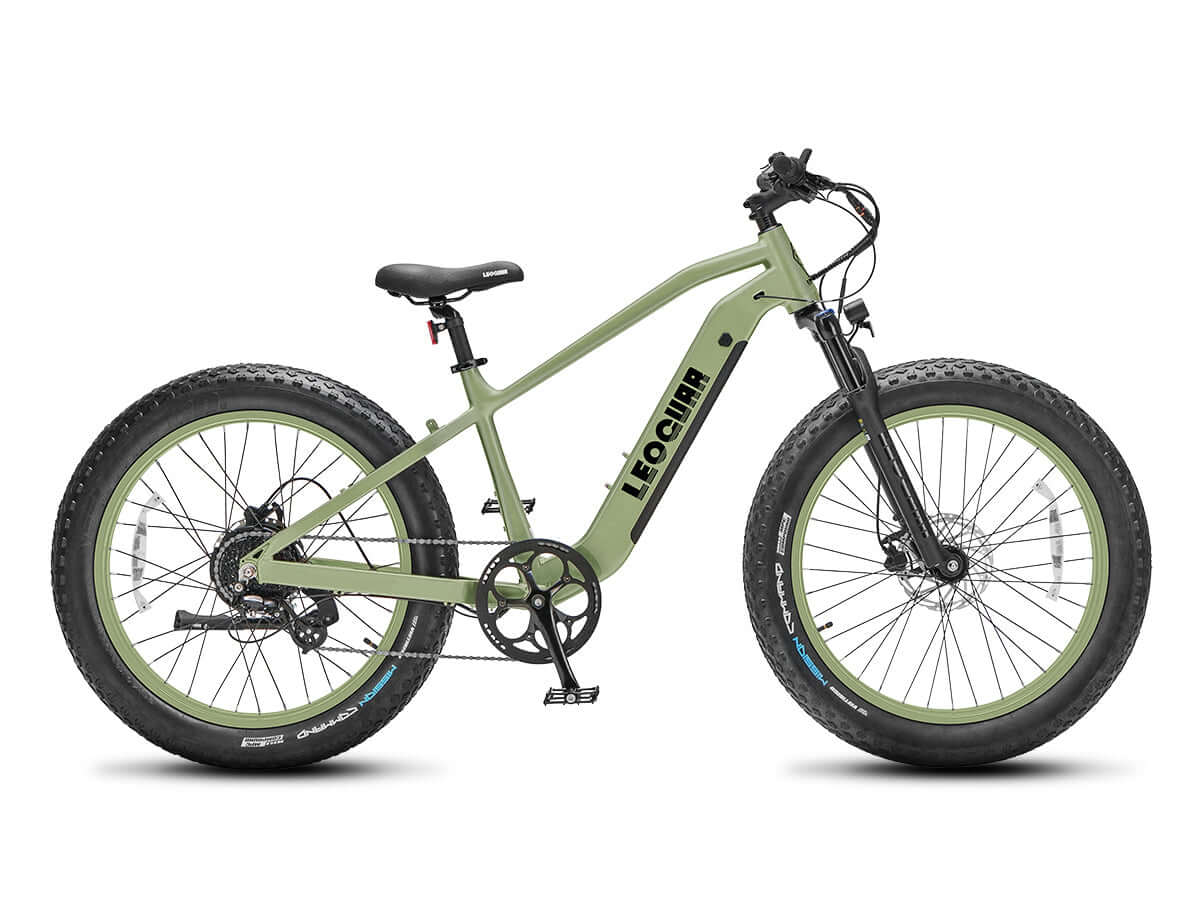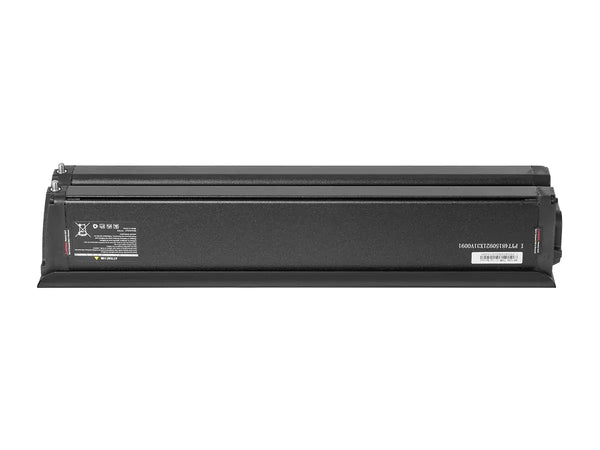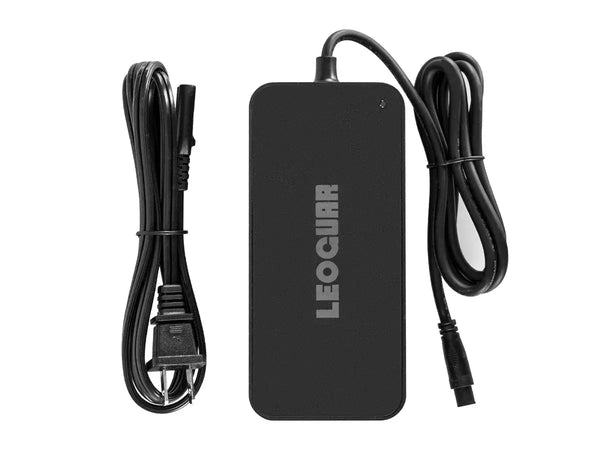
Electric Bike Charger 48V: Is 48V Better Than 36V or 52V?
Understanding E-Bike Voltage Systems
When you first explore electric bikes, the numbers can confuse you. You see terms like 36V, 48V, and 52V everywhere, and one simple question comes up: which one works best? The short answer is that the best voltage depends on you—your riding style, your usual terrain, and what you expect from performance. However, for most riders, a 48V system hits the perfect sweet spot, offering a great mix of power, efficiency, and value.
This guide will cut through the confusion. We'll explain what e-bike voltage means in practical terms. We will compare 36V, 48V, and 52V systems head-to-head so you can see the trade-offs. Most importantly, we'll help you choose the right system for your specific needs and guide you on how to pick a safe and effective electric bike charger 48v to power your rides for years to come.
Understanding E-Bike Basics
Before we compare systems, let's build a clear foundation. Understanding a few key terms will help you make a truly informed decision, moving beyond marketing talk to grasp what really powers your e-bike.
Voltage (V): The Power
Think of your e-bike's electrical system like a water hose. Voltage is the water pressure. It's the force that pushes electrical energy from the battery to the motor. A higher voltage means more "pressure," which translates to greater potential for snappier acceleration and higher top speeds. It gives the motor the punch it needs to tackle hills and respond quickly when you twist the throttle or engage the pedal assist.
Amps and Amp-hours
If voltage is the pressure, Amps (A) are the volume of water flowing through the hose at any given moment. This is the current your motor is drawing. Amp-hours (Ah) represent the size of your "fuel tank." A battery with more Amp-hours can sustain that flow of electricity for longer, which directly translates to a longer range. To understand your battery total capacity, you multiply Volts by Amp-hours to get Watt-hours (Wh), the ultimate measure of your e-bike's energy reserve. As experts explain when detailing how power is measured in e-bikes, Watt-hours give you the most accurate picture of potential range.
Nominal vs. Full Voltage
Here's a crucial detail that trips up many new riders. A "48V" battery doesn't operate at exactly 48 volts all the time. This is its nominal or average voltage. When you take it fresh off the charger, a 48V lithium-ion battery is actually at its peak voltage, which is around 54.6V. As you ride, the voltage gradually drops. This is why any 48v lithium battery charger for an electric bike must have an output of 54.6V to fully charge the battery. Using a charger with the wrong voltage output is one of the fastest ways to damage your battery.
Core Comparison: 36V, 48V, 52V
Now that we have the basics down, let's put these three popular systems side-by-side. While specs can vary between manufacturers, this table provides a general overview of what you can expect from each voltage class.
| Feature | 36V System | 48V System | 52V System |
|---|---|---|---|
| Primary Use Case | Casual cruising, flat urban commutes | All-around performance, commuting, trail riding | High-performance, steep hills, heavy loads |
| Performance Feel | Gentle, smooth, predictable | Punchy, powerful, responsive | Aggressive, torquey, rapid acceleration |
| Hill Climbing | Moderate; can struggle on steep grades | Strong; confidently handles most hills | Excellent; powers up steep inclines with ease |
| Efficiency & Range | Often very efficient on flat ground | Balanced power and efficiency | Slightly less efficient; trades it for raw power |
| System Weight & Cost | Lightest and most affordable option | Mid-range weight and cost; the "sweet spot" | Heaviest and most expensive system |
The Reliable 36V
The 36V system is the long-standing workhorse of the e-bike world. It's perfect for riders who want a lightweight electric bike for casual rides around the neighborhood or commuting on relatively flat terrain. The power delivery is typically gentle and easy to manage, making it a great entry point for those new to electric bikes. While it can handle small hills, it will feel noticeably less powerful on sustained or steep hills compared to its higher-voltage counterparts. Its main advantages are lower cost and lighter weight.
The All-Rounder 48V
This is where the magic happens for most riders. A 48V system delivers a significant, noticeable boost in performance over 36V. Acceleration is quicker, and hills that would slow down a 36V bike are handled with confidence. It provides that thrilling, "e-bike" feeling of being pushed up a climb. It's the perfect middle ground, offering plenty of power for varied terrain and spirited riding without the added weight, cost, and component strain of a 52V system. For this reason, the 48V standard has become the most popular choice for a huge range of e-bikes, from commuters to mountain bikes. This popularity also means that finding a replacement electric bike charger 48v or other components is generally easier.
The Powerhouse 52V
For the performance lovers and those who demand the most torque, the 52V system is the king. It delivers the fastest acceleration and the most raw hill-climbing power. This system is often favored by experienced e-MTB riders, heavy-duty cargo bike users, or anyone who simply wants the highest performance possible. The trade-offs are a higher price tag, increased weight, and potentially more wear on drivetrain components due to the higher power output. This level of performance is incredible but is often more than what the average rider needs for daily use. The underlying e-bike battery technology is similar across these systems, but the 52V configuration is tuned for maximum output.
A Scenario-Based Guide
Technical specs are useful, but let's translate this into real-world riding. Find the profile that best matches you to see which system makes the most sense.
The Urban Commuter
You ride daily on city streets, bike paths, and a few rolling hills. You might be carrying a backpack or a pannier with a laptop and lunch. For you, a 36V system can be perfectly adequate, especially if your route is mostly flat. However, upgrading to a 48V system gives you extra confidence. You'll accelerate away from stoplights more quickly and won't have to worry about that one steep hill on your route home, even with a bag full of groceries.
Recommendation: 36V is sufficient and budget-friendly. 48V is a fantastic upgrade for more confidence and versatility.
The Weekend Explorer
Your rides are a mix of everything. You might spend Saturday on paved bike trails and Sunday exploring gravel paths or moderate singletrack. You value performance and want a bike that feels capable and fun, no matter where you take it. This is the rider profile for whom the 48V system was made. It has the power to make climbs enjoyable and the responsiveness to feel lively and engaging on any terrain.
Recommendation: A 48V system is your ideal choice, offering the best balance of power, range, and cost for versatile riding.
The Performance Enthusiast
You live for the thrill. You want the fastest acceleration, the most torque to blast up technical climbs, and the highest possible top speed. You are an experienced rider who pushes your equipment to its limits. While a high-output 48V system can be very satisfying, you are the prime candidate for a 52V system. The extra voltage will give you that aggressive, raw power you're looking for.
Recommendation: A high-end 48V system is great, but a 52V system will deliver the peak performance you crave.
The Long-Distance Tourer
Your goal is maximum range. You want to cover as many miles as possible on a single charge. For you, the most important metric isn't just voltage, but Watt-hours (Wh). While a 48V system is generally very efficient, you should prioritize a large battery capacity (high Ah). A 48V 20Ah battery (960Wh) will offer significantly more range than a 36V 15Ah battery (540Wh). A 48V system with a large-capacity battery is often the perfect blend for long-distance touring.
Recommendation: Focus on total Watt-hours. A high-capacity 48V battery is often the ideal solution for balancing range and power.
Choosing Your 48V Charger
Once you've settled on a 48V system, selecting the right charger is not just an afterthought—it's critical for the safety and longevity of your battery. A battery is a significant investment, and the charger is its gatekeeper.
Match the Specifications
You cannot use just any charger. Mismatching specs can lead to undercharging, overcharging, or permanent battery damage.
Voltage: This is non-negotiable. As we discussed, a 48V lithium-ion battery requires a charger with a maximum output of 54.6V. Never use a charger with a different voltage output, such as one for a 36V (42V output) or 52V (58.8V output) battery.
Amperage: The charger's Amp (A) rating determines its charging speed. Most stock chargers are 2A, which is safe and reliable. A "fast charger" might be 3A, 4A, or even higher. While faster charging is convenient, it also generates more heat. Consistently using a fast charger can, over the long term, slightly reduce the overall lifespan of your battery cells. A 2A or 3A electric bike charger 48v is a great balance for daily use.
Connectors: E-bike chargers use various connectors. The most common types are the DC 2.1mm barrel plug and the 3-pin XLR plug. Before buying a replacement, visually inspect the charging port on your battery and compare it to the charger's plug to ensure a perfect match.
The Importance of Safety
This is where we must be direct. Never, ever use a cheap, uncertified charger.
UL/CE Certifications: Look for chargers that are UL (Underwriter Laboratories) or CE (Conformité Européenne) certified. These marks indicate that the charger has been independently tested to meet strict safety standards for fire and electrical shock. We have seen countless cases in our work where a non-certified charger fails, overheats, or, in the worst-case scenario, damages a $500+ battery. A certified 48v lithium battery charger for an electric bike is a small investment for huge peace of mind.
Smart Charging Features: A quality charger is a "smart" charger. It will automatically shut off or switch to a low-power trickle mode once the battery reaches its full 54.6V charge. This prevents overcharging, which is extremely dangerous and damaging to lithium-ion cells.

Extending Your Battery's Life
Your charger and your habits work together to determine your battery's health. To get the most out of your investment, follow these best practices.
The 80/20 Rule
For optimal long-term health, it's best to keep your battery's charge level between 20% and 80%. You don't need to fully charge it to 100% after every short ride. Constant charging to 100% and deep discharging to 0% puts the most strain on the battery cells. For daily use, charging to 80-90% is perfect. Only charge to 100% when you know you'll need the maximum possible range for a long ride.
Storage and Temperature
If you plan to store your e-bike for more than a few weeks, aim for a charge level of around 40-60%. Store the battery indoors in a cool, dry place. Extreme temperatures, both hot and cold, are the enemy of battery health. Never leave your battery in a hot car or charge it in freezing temperatures. According to experts on EV charging, temperature has a significant impact on battery performance and longevity, a principle that applies to e-bikes as well. For more on this, you can read about the effects of temperature on EV batteries.
The Final Word
Navigating the technical landscape of e-bikes can be complex, but understanding voltage helps clarify one of the biggest decisions you'll make. While 36V systems are great for casual use and 52V systems offer thrilling peak performance, the 48V system stands out as the ultimate all-rounder. It provides the power to flatten hills, the responsiveness to make every ride exciting, and the perfect balance of performance and value for the vast majority of riders.
When you invest in a 48V e-bike, remember to treat its power source with respect. Always choose a high-quality, certified electric bike charger 48v with the correct 54.6V output and a matching connector. By pairing the right system with the right charging practices, you ensure countless miles of safe, powerful, and exhilarating rides.
Frequently Asked Questions
Can I use a 36V charger on a 48V battery?
No, you should never use a 36V charger on a 48V battery. A 36V charger outputs 42V, which is not enough to fully charge a 48V battery that requires 54.6V. Using the wrong charger can damage your battery and void your warranty.
How long does it take to charge a 48V e-bike battery?
Charging time depends on your battery capacity and charger amperage. A typical 48V 15Ah battery with a 2A charger takes about 6-8 hours for a full charge. A 3A or 4A fast charger can reduce this time to 4-5 hours, but may generate more heat.
Is it safe to leave my 48V battery on the charger overnight?
Yes, if you're using a quality, certified smart charger. These chargers automatically stop charging or switch to maintenance mode when the battery reaches full capacity. However, it's still best practice to unplug the charger once charging is complete to maximize battery lifespan.
What's the difference between a 48V 10Ah and 48V 20Ah battery?
The voltage is the same, so performance will be similar. The difference is in range - the 20Ah battery has twice the capacity (960Wh vs 480Wh) and will provide roughly twice the riding distance on a single charge. The 20Ah battery will also be larger, heavier, and more expensive.
Can I upgrade from a 36V to a 48V system on my existing e-bike?
This upgrade is technically possible but not recommended for most riders. You would need to replace the battery, charger, and potentially the motor and controller. The cost and complexity usually make it more practical to purchase a new 48V e-bike instead of upgrading an existing 36V system.











































Leave a comment